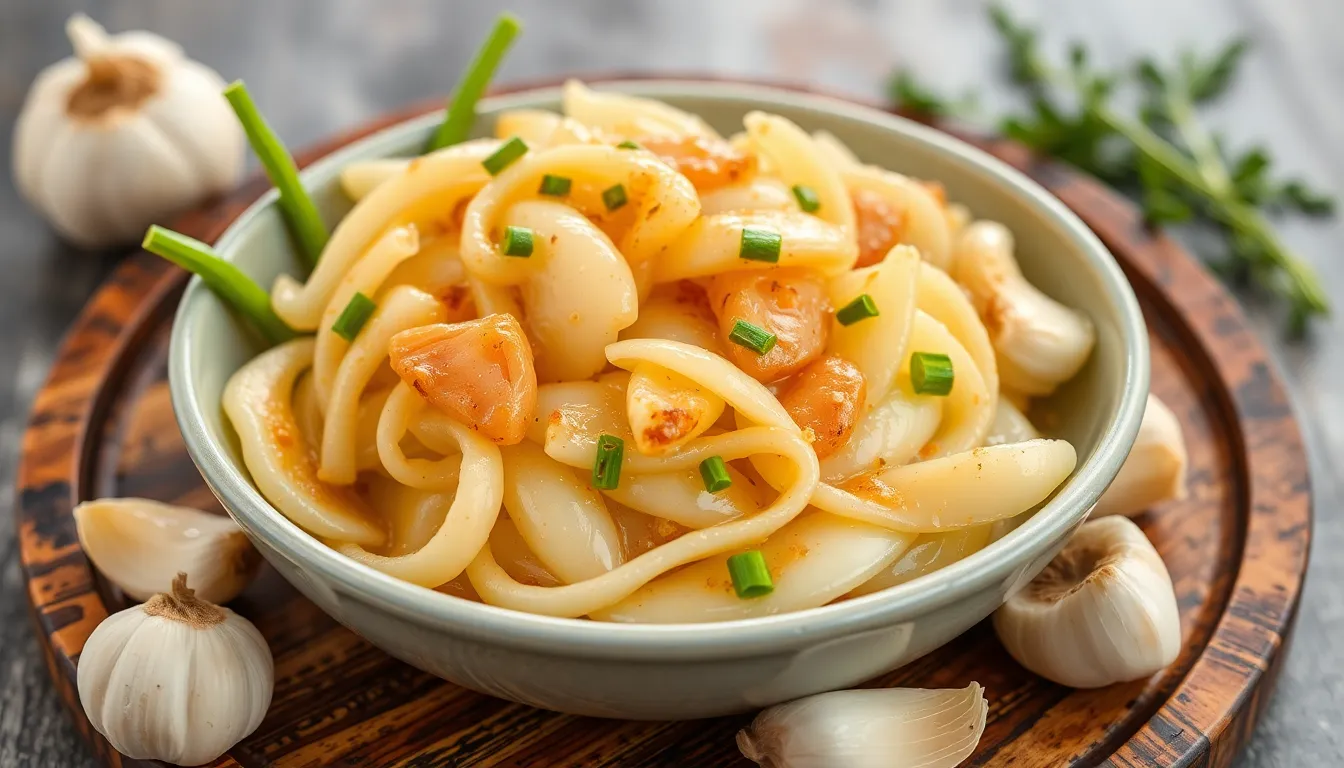Blanching Garlic: A Flavorful Twist You Need to Try
Introduction
Garlic has long been celebrated as a quintessential ingredient in kitchens around the world, revered for its distinctive flavor and health benefits. From classic Italian pasta dishes to aromatic Asian stir-fries, garlic’s versatility makes it a staple in countless recipes. However, its robust and pungent aroma can sometimes overpower a dish, which is where the art of blanching comes into play. Blanching garlic softens its intensity and enhances its natural sweetness, making it a delightful addition to your culinary repertoire.
In this post, we’ll explore the fascinating world of garlic, the benefits of blanching, and how you can incorporate this technique into your cooking. By the end, you’ll find yourself inspired to reimagine this beloved ingredient in ways you never thought possible.
Section 1: Understanding Garlic
1.1 Types of Garlic
Garlic comes in several varieties, each offering unique flavors and culinary applications. Here’s a quick overview:
- Hardneck Garlic: Known for its complex, robust flavor, hardneck garlic features a stiff central stalk and is often preferred by chefs. Varieties include Rocambole and Porcelain.
- Softneck Garlic: This type has a milder taste and a flexible stalk, making it great for braiding. The most common variety is Artichoke.
- Elephant Garlic: Technically a species of leek, this variety produces large bulbs and has a milder flavor than traditional garlic, making it a great option for those who find garlic too pungent.
1.2 Nutritional Benefits
Garlic is not only an excellent flavor enhancer but also packed with health benefits, including:
- Antioxidant Properties: Garlic is rich in antioxidants that combat oxidative stress in the body.
- Heart Health: Regular consumption can lower cholesterol levels and reduce the risk of heart disease.
- Anti-Inflammatory Effects: Garlic contains compounds that exhibit anti-inflammatory properties.
- Immune Boosting: It can help in strengthening the immune system, especially during cold and flu season.
Section 2: The Blanching Process
2.1 What is Blanching?
Blanching is a cooking technique that involves briefly boiling food and then plunging it into ice water to halt the cooking process. While often used for vegetables to preserve color, texture, and nutrients, blanching garlic offers additional benefits, particularly in flavor and texture.
2.2 Why Blanch Garlic?
Blanching garlic serves several purposes, including:
- Milder Flavor: The process mellows out the pungency, making it perfect for those sensitive to garlic’s raw intensity.
- Easier to Peel: Blanching loosens the skins, allowing for quick and easy peeling.
- Improved Texture: The result is a softer, sweeter garlic that can add depth to various dishes without overwhelming other flavors.
Section 3: How to Blanch Garlic
3.1 Ingredients Needed
To blanch garlic, you’ll need the following ingredients:
- Fresh garlic bulbs
- Water (for boiling)
- Ice (for the ice bath)
3.2 Step-by-Step Instructions
Follow these simple steps to blanch garlic:
- Prepare garlic bulbs: Separate the cloves from a bulb of garlic while keeping the skins on.
- Boil water: Fill a pot with water and bring it to a rolling boil. This should take about 5-10 minutes.
- Blanch garlic cloves: Carefully add the garlic cloves to the boiling water and let them blanch for about 30 seconds.
- Transfer to ice bath: Using a slotted spoon, remove the garlic cloves and immediately plunge them into a bowl of ice water for 1-2 minutes to stop the cooking process.
- Drain and store: Once cooled, drain the garlic and peel off the skins. You can use the blanched garlic immediately or store it in the refrigerator for later use.
Blanching Garlic at a Glance
| Step | Action | Time |
|---|---|---|
| 1 | Prepare garlic bulbs | 1-2 minutes |
| 2 | Boil water | 5-10 minutes |
| 3 | Blanch garlic cloves | 30 seconds |
| 4 | Transfer to ice bath | 1-2 minutes |
| 5 | Drain and store | 1 minute |
Section 4: Flavorful Uses for Blanched Garlic
4.1 Cooking Applications
Once you’ve mastered blanching garlic, you can incorporate it into a variety of dishes, such as:
- Sauteed Vegetables: Add blanched garlic to your favorite vegetable stir-fry for a mild yet flavorful enhancement.
- Pasta Dishes: Toss blanched garlic in olive oil with pasta and sautéed greens for a deliciously simple meal.
- Homemade Dressings: Blend blanched garlic into vinaigrettes or creamy dressings for a subtle garlicky flavor.
- Garlic Mashed Potatoes: For a twist on this classic dish, mix in blanched garlic for a smooth and fragrant result.
4.2 Pairing Suggestions
Blanched garlic pairs well with a variety of ingredients, enhancing their flavors without overpowering them. Consider these combinations:
- Herbs: Basil, parsley, and thyme complement the subtle sweetness of blanched garlic.
- Proteins: Use blanched garlic in marinades for chicken, fish, or tofu to create a deliciously nuanced flavor.
- Cheeses: Incorporate blanched garlic into creamy cheeses, such as ricotta or cream cheese, for a delightful spread.
- Vegetables: Pair blanched garlic with roasted or sautéed vegetables like zucchini, bell peppers, and asparagus.
Conclusion
Blanching garlic is a simple yet transformative technique that can elevate your cooking to new heights. By softening its pungency and enhancing its sweetness, you can enjoy garlic in ways you never thought possible. So, the next time you find yourself reaching for that garlic bulb, consider blanching it first for a flavorful twist. Your dishes will thank you!
https://www.youtube.com/watch?v=8COnmk0rgl0




